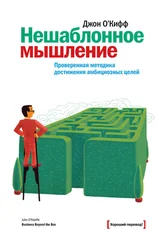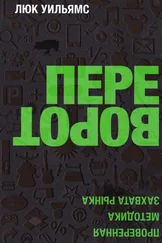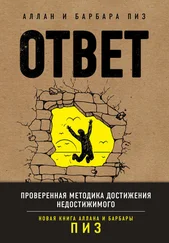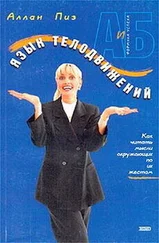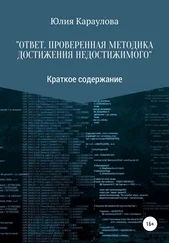Magoun, H. W. (1952). ‘An ascending reticular activating system in the brain stem’. Ama Archives of Neurology and Psychiatry 67 (2): 145–154. doi: 10.1001/archneurpsyc.1952.02320140013002. PMID 14893989.
Reiner, P. B. (1995). ‘Are mesopontine cholinergic neurons either necessary or sufficient components of the ascending reticular activating system?’. Seminars in the Neurosciences 7 (5): 355–359. doi:10.1006 /smns.1995.0038.
Robinson, D. (1999). ‘The technical, neurological and psychological significance of «alpha», «delta» and «theta» waves confounded in EEG evoked potentials: a study of peak latencies’. Clinical Neurophysiology 110 (8): 1427–1434. doi:10.1016/S1388-2457(99)00078-4. PMID 10454278.
Rothballer, A. B. (1956). ‘Studies on the adrenalinesensitive component of the reticular activating system’. Electroencephalography and Clinical Neurophysiology 8 (4): 603–621. doi:10.1016/0013-4694(56)90084-0. PMID 13375499.
Ruth, R. E. & Rosenfeld, J. P. (1977). ‘Tonic reticular activating system – relationship to aversive brain-stimulation effects’. Experimental Neurology 57 (1): 41–56. doi:10.1016/0014-4886(77)90043-7. PMID 196879.
Shute, C. C. D. & Lewis, P. R. (1967). ‘The ascending cholinergic reticular system: neocortical, olfactory and subcortical projections’. Brain 90 (3): 497–520. doi:10.1093/brain/90.3.497. PMID 6058140.
Steriade, M. (1995). ‘Neuromodulatory systems of thalamus and neocortex’. Seminars in the Neurosciences 7 (5): 361–370. doi:10.1006/smns.1995.0039.
Steriade, M. (1996). ‘Arousal: Revisiting the reticular activating system’. Science 272 (5259): 225–226. doi:10.1126/science.272.5259.225. PMID 8602506.248
Svorad, D. (1957). ‘Reticular activating system of brain stem and animal hypnosis’. Science 125 (3239): 156–156. doi:10.1126/science.125.3239.156. PMID 13390978.
Vincent, S. R. (2000). ‘The ascending reticular activating system – from aminergic neurons to nitric oxide’. Journal of Chemical Neuroanatomy 18 (1–2): 23–30. doi:10.1016/S0891-0618(99)00048-4. PMID 10708916.
http://sleepdisorders.sleepfoundation.org/chapter-1-normal-sleep/neurobiology-of-sleep/
http://www.ncbi.nlm.nih.gov/pmc/articles/PMC2701283/
Глава 2
http://www.dominican.edu/academics/ahss/undergraduate-programs/psych/faculty/assets-gail-matthews/researchsummary2.pdf
https://www.washingtonpost.com/news/on-leadership/wp/2013/10/10/only-13-percent-of-people-worldwide-actuallylike-going-to-work/
Глава 3
Hill, P. L. & Turiano, N. A. (2014). ‘Purpose in life as a predictor of mortality across adulthood’. Psychological Science . doi: 10.1177/0956797614531799.
Shackell, Erin M. & Standing, Lionel G. ‘Mind over matter: Mental training increases physical strength’. North American Journal of Psychology 9: 189–200.
http://www.medicalnewstoday.com/articles/276893.php
Глава 6
Brayand, F. & Moller, B. (2006). ‘Predicting the future burden of cancer’. Nature Reviews Cancer 6: 63–74. doi:10.1038/nrc1781.
Calle, E. E., Rodriguez, C., Walker-Thurmond, K. & Thun, M. J. (2003). ‘Overweight, obesity, and mortality from cancer in a prospectively studied cohort of U.S. adults’. New England Journal of Medicine 348: 1625–1638. doi: 10.1056/ NEJMoa021423.
Doll, R. & Peto, R. (1981). ‘The causes of cancer: quantitative estimates of avoidable risks of cancer in the United States today’. Journal of the National Cancer Institute 66: 191–308.
Kolonel, L. N., Altshuler, D. & Henderson, B. E. (2004). ‘The multiethnic cohort study: exploring genes, lifestyle and cancer risk’. Nature Reviews Cancer 4: 519–27. doi:10.1038/nrc1389.
http://www.who.int/mediacentre/news/releases/2003/pr27/en/
https://www.apf.asn.au/Members/Information/A-Skydiver-s-Guideto-Mental-Training/default.aspx
https://students.education.unimelb.edu.au/LiteracyResearch/pub/Projects/AKurzman.pdf
http://www.psych.nyu.edu/oettingen/Barry%20Kappes,%20H.,%20&%20Oettingen,%20G.%20(2011).%20JESP.pdf
Глава 7
Ahsen, A. (1984). ‘ISM: The triple code model for imagery and psychophysiology’. Journal of Mental Imagery 8 (4): 15–42.
Behncke, L. (2004). ‘Mental skills training for sports: A brief review’. Athletic Insight. The Online Journal of Sport Psychology. [ http://www.athleticinsight.com/html]. Retrieved 22 April 2010.
Bell, R., Skinner, C. & Fisher, L. (2009). ‘Decreasing putting yips in accomplished golfers via solution-focused guided imagery: A single-subject research design’. Journal of Applied Sport Psychology 21 (1): 1–14.
Boyd, J. & Munroe, K. (2003). ‘The use of imagery in climbing’. Athletic Insight. The Online Journal of Sport Psychology . [ www.athleticInsight.com/html]. Retrieved 21 March 2010.
Callow, N. & Hardy, L. (2001). ‘Types of imagery associated with sport confidence in netball players of varying skills’. Journal of Applied Sport Psychology 13: 1–17.
Callow, N., Roberts, R. & Fawkes, J. (2006). ‘Effects of dynamic and static imagery on vividness of imagery skiing performance, and confidence’. Journal of Imagery Research in Sport and Physical Activity 1: 1–15.
Calmels, C., Holmes, P., Berthoumieux, C. & Singer, R. (2004). ‘The development of movement imagery vividness through a structured intervention in softball’. Journal of Sport Behavior 27: 307–322.
Cumming, J., Nordin, S., Horton, R. & Reynolds, S. (2006). ‘Examining the direction of imagery and self-talk on dartthrowing performance and self-efficacy’. The Sport Psychologist 20: 257–274.
Driskell, J., Cooper, C. & Moran, A. (1994). ‘Does mental practice enhance performance?’ Journal of Applied Sport Psychology 79: 481–492.
Evans, L., Jones, L. & Mullen, R. (2004). ‘An imagery intervention during the competitive season with an elite rugby union player’. The Sport Psychologist 18: 252–271.
Feltz, D. & Landers, D. (1983). ‘The effects of mental practice on motor skill learning and performance: A meta-analysis’. Journal of Sport Psychology 5: 25–57.
Fischman, M. & Oxendine, J. (1993). ‘Motor skill learning for effective coaching and performance’. In J. W. Williams (ed.), Applied Sport Psychology (Palo Alto, Calif.: Mayfield), pp. 11–23.
Glisky, M., Williams, J. & Kihlstrom, J. (1996). ‘Internal and external imagery perspectives and performance on two tasks’. Journal of Sport Behavior 19 (1): 3–18.
Gould, D., Damarjian, N. & Greenleaf, C. (2002). ‘Imagery training for peak performance’. In J. Van Raalte and B. Brewer (eds), Exploring Sport and Exercise Psychology (Washington, DC: American Psychological Association), 2nd edn, pp. 49–74.
Gray, S. (1990). ‘Effect of visuo-motor rehearsal with videotaped modeling on racquet ball performance of beginning players’. Perceptual and Motor Skills 70: 379–385.
Green, L. (1993). ‘The use of imagery in the rehabilitation of injured athletes’. In D. Pargman (ed.), Psychological Bases of Sport Injuries (Morgantown, WV: Fitness Information Technology), pp. 199–218.
Guillot, A. & Collet, C. (2008). ‘Construction of the motor imagery integrative model in sport: A review and theoretical investigations of motor imagery use’. International Review of Sport and Exercise Psychology 1 (1): 31–44.
Guillot, A., Nadrowska, E. & Collet, C. (2009). ‘Using motor imagery to learn tactical movements in basketball’. Journal of Sport Behavior 32 (2): 189–206.
Читать дальше
Конец ознакомительного отрывка
Купить книгу

